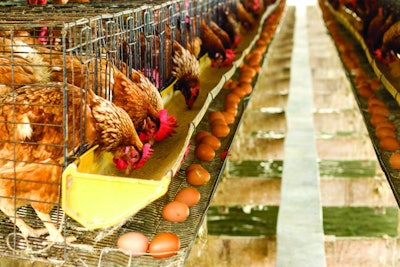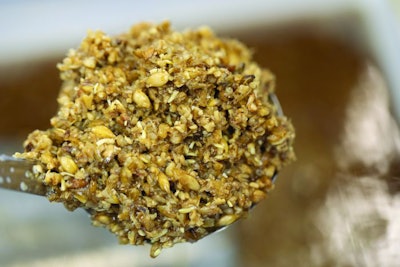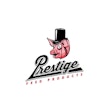
Improving pig and poultry performance and getting more out of alternative raw materials are 2 reasons to consider this age-old technique
With feed being the greatest cost in pig and poultry production, any technology that can help reduce it is welcomed. Fermentation is an age-old technique that is becoming popular again in animal nutrition for this reason. A similar trend in human nutrition has led to an increase in sales of products like kefir, kombucha and sourdough bread.
The increased lactic acid bacterial content of fermented feed is associated with a lower feed pH and higher concentration of organic acids. For these reasons, gut health is improved, leading to benefits in growth, feed conversion and animal resilience. A push for more sustainable agriculture relies on the use of non-conventional raw materials, and fermentation is one way to improve their nutritional value.
History of fermentation
The process of fermentation has been used to preserve food for thousands of years. It improves the taste, smell and digestibility of many human foods. Lactic acid bacteria are used to produce yogurt and cheese, for example, while yeasts ferment products like beer, wine and bread. In order to ferment food, warmth and beneficial microorganisms are needed, as well as having strict processes to avoid contamination with other microorganisms. Many of these species of bacteria or yeast use glucose in the foodstuff and produce fermentation products including ethanol, carbon dioxide, lactic acid and acetic acid.
A wide variety of raw materials can be fermented, including cereals, protein meals and pulses. The raw materials are ground, then added with warm water and lactic acid bacteria into the fermenter — the process takes just a couple of days. In the case of wet feeding for pigs, producers may ferment their own, e.g., wheat and barley, before adding them to the rest of the diet, or fermented raw materials can be bought and added in. In commercial feed production for pigs and poultry, fermented raw materials can be added to diets, which have been dried, post fermentation. Some of these may be processed using a solid state fermentation (SSF) technique. This involves the use of specific microorganisms to ferment dry feedstuffs, which may then be crimped or ground for inclusion into diets.
Digestibility and gut health
Nutrients in fermented feed are more digestible and are more readily absorbed — better to meet the nutritional requirements of animals. Fermentation also increases the levels of B vitamins (folic acid, riboflavin, niacin and thiamin) and improves the content of naturally occurring enzymes in the feed. By improving digestion, the protein content of the feed and amino acid availability in feed is improved. It has been shown that fermentation also reduces the level of anti-nutritional factors (ANFs) — further increasing the nutritive value of susceptible raw materials. The process introduces beneficial microorganisms to the animal’s gut, which help digestion and support gut health.
 Fermentation is being used in wet feeding systems for pigs and to process certain ingredients used in poultry, with benefits to gut health and performance. (Sinhyu | iStock.com)
Fermentation is being used in wet feeding systems for pigs and to process certain ingredients used in poultry, with benefits to gut health and performance. (Sinhyu | iStock.com)Fermented feed in poultry
While fermenting feed for pigs is more widely known, there is increased interest and research into the process for poultry. The fermented feed increases intestinal health through acidification of the upper digestive tract, linked to lower feed pH and higher concentrations of lactobacilli (LAB) and organic acids. Researchers have noted that the concentration of LABs, low pH and high concentrations of lactic and acetic acid led to lower numbers of enterobacteria in poultry fed fermented feed.
Backyard poultry producers have been advocated fermenting feed. Methods suggested are simply to cover a quantity of feed with water in a container and leave it for three days. The feed fermented is either an off-the-shelf diet or a mix of whole and cracked grains, e.g. wheat, oats and corn. However, the addition of an effective lactobacillus culture improves fermentation and consistency of the resulting feed. In a commercial situation, wet feeding of hens is difficult to manage with the attractiveness of such diets reducing rapidly.
There have been many studies feeding fermented feed to laying hens. Results include increases in egg weight and eggshell thickness, as well as improved disease resistance.
Litter quality is a key indicator of gut health and bird welfare. A trial in laying hens showed that when they were fed a wet fermented feed, the dry matter of the litter was lower, along with improvements in body weight gain and feed conversion ratio (FCR). Efficiency was shown in terms of lower dry matter intake and increased egg weight, with the added bonus of increased shell strength, which reduces losses due to seconds.
With increases in the cost of corn, broiler producers are looking at ways of replacing it. One option to capitalize on the benefits of fermented feed without the issues of wet feeding is to include fermented alternative raw materials in the ration. These include fermented cereals, cereal co-products and protein meals. A recent trial in turkeys demonstrated the potential of a fermented oil seed rape (OSR) product, added at 15%, replacing a standard OSR meal. Birds fed the product had greater final body weight, with no negative effects on carcass quality.
Fermented feed and pig performance
Fermented feed ingredients include protein sources and energy sources. Fermentation improves protein digestibility, increasing the number of small peptides, decreasing larger-sized peptides, and improving amino acid availability. For energy sources, the process increases starch and energy digestibility, as well as short-chain fatty acid content, while at the same time reducing fiber levels. In addition, fermenting botanicals can increase their antioxidative and pharmacodynamic effects.
The use of fermented feed is particularly suited to producers who are already liquid feeding, and it is becoming more popular across Europe. Producers report that pigs have a better start and are more resistant to challenges as they grow, helping to reduce the use of zinc oxide. Trials have shown that pigs fed fermented feed had lower levels of enterobacteria including E. coli and Salmonella. Standard liquid pig feed has a pH of between 6 and 8, while fermented liquid feed is more acidic with a pH of 3 to 4. A review of trials found that, when pigs were fed fermented feed, their weight gain was 13% higher compared to pigs fed standard liquid feed and 22% higher than in those fed dry rations.
A meta-analysis on the effect of fermented feed supplementation on pig performance (Bocheng et al., 2020) was published in 2020. Here, the trials were divided into two groups, classified as ingredients if they were protein and energy sources, or additives if they were plant materials added at low levels. They found that fermented feed improved average daily gain and gain:feed ratio of pigs, but had no effect on average daily feed intake of pigs. Results suggest that fermented feed ingredients boost the growth performance of weaner and grower pigs and that fermented feed additives promoted pigs’ growth at all stages.
Savings and sustainability
One of the key benefits of fermented feed is its lower pH. This inherent property means that undesirable bacteria are less able to grow in the feed and it naturally lowers the pH of the gut without the use of acidifiers. It is this factor that improves digestibility and gut health of animals, at the same time improving FCR. Together, these actions save feed costs, reduce bacterial load and improve the overall economics of production, as well as being a tool for helping to reduce pathogenic bacteria in both pigs and poultry in an era of reduced antibiotic use.
Many alternative raw materials come with the challenge of higher fiber levels, lower protein and energy content. The ability of fermentation to improve the nutritional quality of these raw materials is four-fold: increasing fat content, lowering fiber levels, increasing protein and amino acid availability, and reducing ANFs. The ability of pig and poultry producers to utilize more locally sourced, cheaper feed ingredients will help to improve profitability and sustainability.
References available upon request.
















